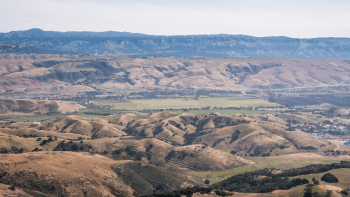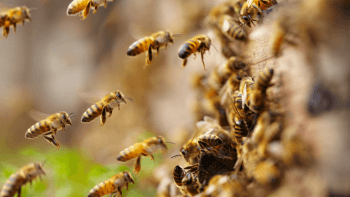Spicing Up Santa Clara Valley Life

As a fourth-generation farmer from a renowned saffron-producing family in Kashmir, India, Wasim Sahibzada carries a legacy of passion and expertise in saffron cultivation. This deep-rooted connection inspired him to continue his family's proud tradition in the Bay Area. To help Wasim embark on his saffron farming journey, the Open Space Authority leased him a one-acre plot of land in Coyote Valley, just south of San José. With this opportunity, Wasim is bringing the rich heritage of saffron cultivation to the Santa Clara Valley and adding to the essential agricultural landscape of the region.
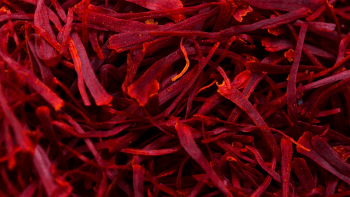
Once called the “Valley of Heart’s Delight” for its bounty of fruit orchards, most of Santa Clara Valley’s active agricultural land is situated between San José and Morgan Hill. Within this region, farmers and ranchers work diligently to tend the land and produce fresh food, thus boosting the economy and creating healthier communities. While farming was once a sought-after industry, modern-day farmers face challenges that make it difficult to sustain a livelihood.
The Open Space Authority works to preserve this important farmland and support farmers like Wasim by providing affordable land on which culturally significant and sustainable farming practices can persist. And while saffron may not be the typical crop grown within the region, it’s people like Wasim whose passion, integrity and commitment to his farming practice inspire the Open Space Authority to continue finding ways in which to preserve Santa Clara Valley’s agricultural legacy.
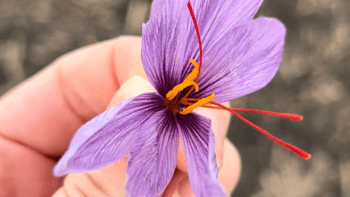
Saffron, or Crocus sativus, comes from a beautiful purple-hued flower that grows out of a round, bulbous seed called a “corm.” During each harvest season, a corm will sprout one to three flowers at once. If the flower is plucked from the corm, it will then reproduce one to two additional times before it becomes dormant for the winter. Inside each flower are three red stigmas or saffron “threads” which are carefully detached from the rest of the flower and dried to be used as fragrance, dye, medicine or a spice.
Originating in Persia, saffron was brought to the Kashmir region of India around 500 B.C. To this day, Kashmir remains the second largest producer of saffron in the world. Traditionally, saffron is used to add color and subtle flavor to dishes like rice, desserts and teas. It’s also thought to have anti-inflammatory, antioxidant and mood-enhancing properties, making saffron a highly sought-after remedy in Ayurvedic, Persian and Chinese medicinal practices and a modern cosmetic ingredient. For many cultures, saffron’s golden-red color is a symbol of sacredness, vitality and good fortune and is often used in religious rituals, festivals and celebrations. For Wasim, saffron also symbolizes family and tradition.

In 2024, Wasim carried on his family’s tradition by planting a few saffron corms at his Bay Area home. “California has the ideal temperatures, conditions and soil that is apt for cultivation,” Wasim said of saffron which typically thrives in areas with dry summers, cool winters and well-drained soil. Growing saffron is no easy feat and has proven to be a labor of love that Wasim is constantly trying to improve.
“Saffron is more than just a spice, it’s a labor-intensive crop that carries centuries of cultural, medicinal and culinary heritage. Growing it requires patience, care and respect for the land, and its value reflects both its rarity and the dedication behind every thread.”
Once his first saffron corms bloomed, Wasim set out to grow the unique crop on a larger scale. Yet, the path to finding a plot of land to farm saffron was extremely difficult due to the competitive and expensive nature of the agricultural market. But, Wasim persevered, networking within agricultural circles to find support for his new endeavor. Eventually, Wasim met Julie Morris, Santa Clara County’s Agricultural Liaison, who connected him to the Santa Clara Valley Open Space Authority.
“Wasim is a perfect example of how Santa Clara County continues to be a land of opportunity, not only for tech entrepreneurs, but for innovative and young farmers,” Morris said. “The Authority’s support of young farmers like Wasim is a testament to their commitment to protect the most important remaining farmlands in the Coyote Valley, while creating economic opportunities for our agricultural community.”
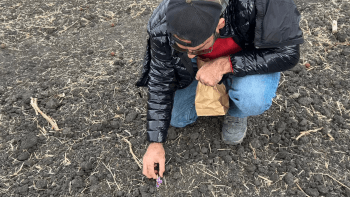
Wasim’s saffron pilot project launched in September 2024 and, despite a late start to the season, saw some success with saffron flowers blooming just a few months later in November. As his business continues to grow, Wasim is excited to produce more blooms and invite the community to his farm to pick their own saffron and take home a piece of his culture. Through a u-pick, Wasim hopes that the public will gain a deeper appreciation for saffron’s history, harvesting process and applications.
“Saffron has always been in my blood and the idea of cultivating saffron here came naturally,” Wasim said. “California has everything – almonds, walnuts, grapes, oranges, wine. It ought to have its own saffron too.”
Keep up to date on Wasim’s saffron-growing progress and future u-pick opportunities by following his Instagram page: instagram.com/safcosaffron

